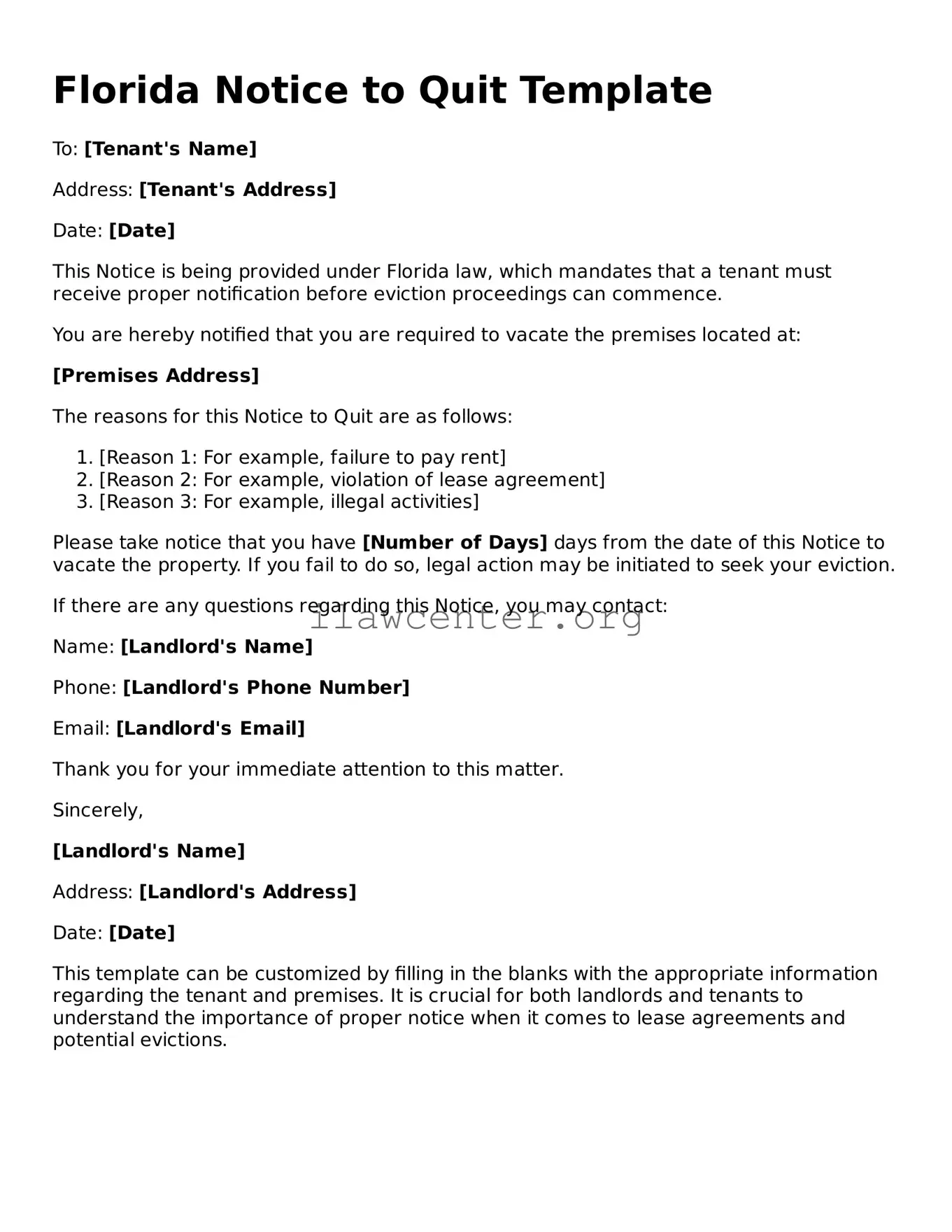What is a Florida Notice to Quit form?
The Florida Notice to Quit form is a legal document landlords use to inform tenants that they must leave the rental property. This notice typically indicates that the tenant has violated the lease agreement or has not paid rent on time. It serves as a formal notification to begin the eviction process if necessary.
How does a landlord utilize the Notice to Quit?
A landlord delivers the notice to the tenant when a lease violation occurs or rent is past due. After issuing the Notice to Quit, the landlord generally waits a specific period, often three to seven days, for the tenant to either rectify the situation or vacate the property.
Is a Notice to Quit required before filing for eviction in Florida?
Yes, in most instances, a Notice to Quit is a prerequisite to filing an eviction lawsuit. It gives the tenant an opportunity to address their issues before legal action takes place. Some exceptions may apply, such as immediate eviction for criminal activities.
What information should be included in a Notice to Quit?
The form should include the date, the address of the property, tenant's name, a clear statement of the lease violation or the reason for eviction, and the specific deadline for the tenant to vacate. It's essential to provide accurate information to avoid potential complications later in the process.
How is the Notice to Quit delivered to the tenant?
Delivery can be done in several ways, including hand delivery, mailing to the tenant’s last known address, or posting it on the property if the tenant is unreachable. Ensure that the method used aligns with state requirements for notice delivery to ensure the process is valid.
What should a tenant do upon receiving a Notice to Quit?
Upon receiving the notice, the tenant should read it carefully to understand the issues raised. They should address any violations mentioned, such as paying overdue rent or correcting lease breaches. Tenants may also wish to consult legal guidance if they believe the notice is unjustified.
How long does a tenant have to respond to a Notice to Quit?
The time frame for response varies depending on the applicable law and the reason for the notice. Generally, tenants have between three to seven days to comply with the terms of the notice or vacate the premises. Check local regulations for specific timelines.
Can the Notice to Quit be challenged?
Yes, tenants have the right to challenge the Notice to Quit if they believe it is improper or if they dispute the claims made by the landlord. This could be done through legal channels, and it is advisable for tenants to seek legal assistance in such cases.
What happens if the tenant does not comply with the Notice to Quit?
If the tenant fails to vacate the property by the deadline stipulated in the notice, the landlord may proceed with an eviction lawsuit. It’s crucial for tenants to understand the implications of non-compliance, as this can lead to legal action and potential eviction from the property.
